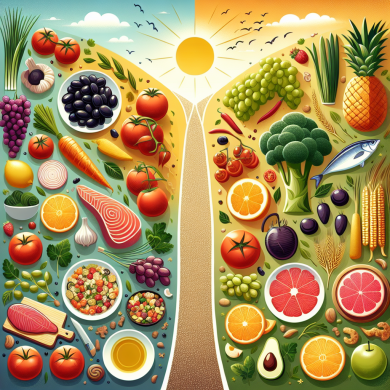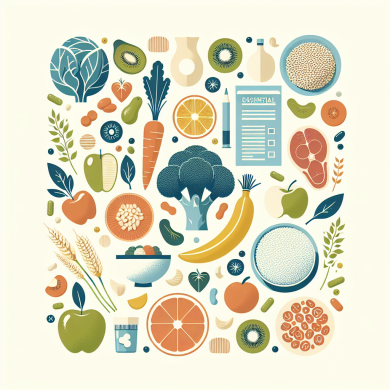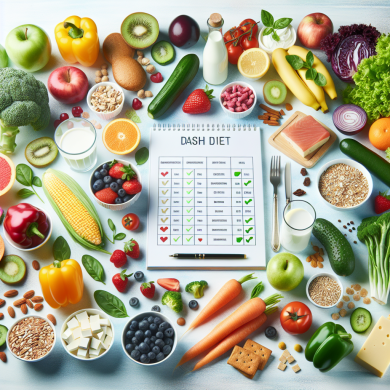Top Protein Picks for the DASH Diet
Introduction
The Dietary Approaches to Stop Hypertension (DASH) diet stands as a beacon for those seeking to manage or prevent hypertension. This dietary pattern emphasizes the intake of fruits, vegetables, whole grains, and lean proteins while reducing sodium, saturated fat, and cholesterol intake. Protein plays a pivotal role in the DASH diet, offering numerous benefits such as muscle building, repair, and satiety. This article highlights the top protein picks suitable for those following the DASH diet, ensuring they receive the nourishment they need while adhering to the diet’s guidelines.
The Role of Protein in the DASH Diet
Protein is an essential macronutrient that supports various bodily functions, including the building and repair of tissues, enzyme and hormone production, and immune system functionality. Within the context of the DASH diet, proteins contribute to heart health by helping to lower blood pressure and maintain a healthy weight. Choosing the right types of protein can enhance the effectiveness of the DASH diet, providing both nutritional benefits and variety in meal planning.
Top Protein Picks for the DASH Diet
1. Lean Poultry
Lean poultry, such as skinless chicken and turkey, is a high-quality source of protein that is low in saturated fat, making it an excellent choice for the DASH diet. These proteins can be prepared in numerous ways, from grilling to baking, ensuring they fit seamlessly into a variety of dishes. It’s important to avoid consuming the skin, as it contains higher levels of fat.
2. Fish and Seafood
Fish and seafood provide not only high-quality protein but also essential omega-3 fatty acids, which are beneficial for heart health. Fatty fish like salmon, mackerel, sardines, and trout are particularly recommended for their heart-protective benefits. These can be included in the diet at least twice a week, helping to lower blood pressure and reduce inflammation.
3. Beans and Legumes
Beans and legumes, such as lentils, chickpeas, black beans, and kidney beans, are excellent plant-based protein sources. They are high in fiber, which aids in digestion and helps maintain stable blood sugar levels. Incorporating beans and legumes into meals can also contribute to lower cholesterol levels, a crucial factor in managing hypertension.
4. Nuts and Seeds
Nuts and seeds, including almonds, walnuts, chia seeds, and flaxseeds, provide a good amount of protein along with healthy fats, vitamins, and minerals. They are calorie-dense, so portion control is essential. Consuming a small handful of nuts or adding seeds to salads, yogurts, or smoothies can enhance the nutritional profile of meals.
5. Low-Fat Dairy
Low-fat dairy products like milk, yogurt, and cheese are rich in protein and calcium, which are significant for bone health. Opting for low-fat or non-fat versions helps reduce saturated fat intake while still providing the benefits of dairy. Greek yogurt, in particular, offers a higher protein content compared to regular yogurt.
6. Eggs
Eggs are a versatile and affordable source of high-quality protein. They contain essential amino acids that are crucial for various bodily functions. While eggs do contain cholesterol, research suggests that moderate egg consumption does not significantly impact heart health for most people. Including eggs in the diet a few times a week can provide the necessary protein without increasing the risk of hypertension.
7. Tofu and Tempeh
Tofu and tempeh are soy-based proteins that are ideal for those following a plant-based version of the DASH diet. They are rich in protein and contain all essential amino acids, making them a complete protein source. Tofu is versatile and can be used in a variety of dishes, from stir-fries to smoothies, while tempeh offers a firmer texture and a nutty flavor.
Tips for Incorporating Protein into the DASH Diet
Variety is Key
Incorporating a wide range of protein sources ensures a comprehensive nutrient intake. Balancing animal and plant-based proteins can provide a diverse array of vitamins, minerals, and other beneficial compounds.
Mind Portion Sizes
While protein is essential, consuming it in moderation is key to maintaining overall caloric balance. The DASH diet encourages controlled portion sizes, which can help manage weight and reduce the risk of heart-related issues.
Opt for Cooking Methods that Retain Nutrients
Choosing cooking methods such as grilling, baking, steaming, or poaching can help retain the nutritional value of protein sources. Avoid deep-frying or using excessive amounts of oil and salt, which can counteract the health benefits of the DASH diet.
Conclusion
The DASH diet is a well-rounded approach to eating that emphasizes the importance of nutrition in managing hypertension. By focusing on the right protein sources, individuals can enhance the effectiveness of the diet, promoting heart health and overall well-being. Lean poultry, fish, beans, nuts, seeds, low-fat dairy, eggs, tofu, and tempeh are all excellent protein choices that align with the principles of the DASH diet. Incorporating these proteins into a balanced diet can help individuals achieve their health goals while enjoying a variety of delicious and nutritious meals.















Add comment